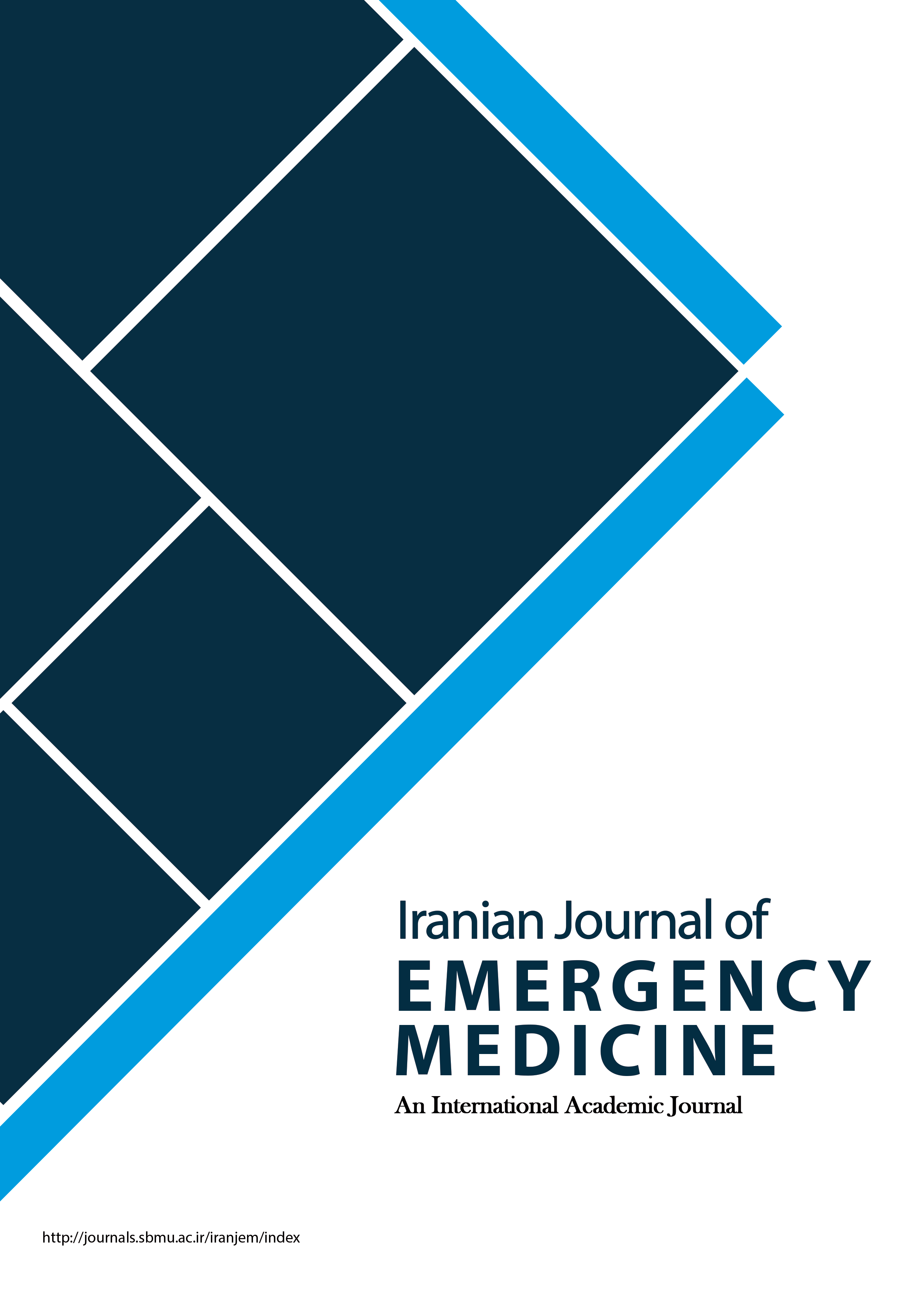Evaluation of Non-emergency Cases Using Emergency Department Services
Iranian Journal of Emergency Medicine,
Vol. 4 No. 3 (2017),
23 June 2017,
Page 96-91
https://doi.org/10.22037/ijem.v2i1.14437
Introduction: Emergency department (ED) has been designed to provide services for patients that are physiologically unstable and need continuous evaluation and treatment according to the process of their illness. Therefore, a major part of critical care is provided for patients in this department. However, a number of patients visiting ED do not need these kinds of services. The present study was done aiming to evaluate the causes of non-emergency cases using ED services. Methods: This cross-sectional study was carried out in ED of Imam Hossein Hospital, Teran, Iran, from August 2014 to August 2015. Convenience sampling was used and all the patients admitted to ED were divided into groups of in need of emergency services and other, based on the algorithm of New York University ED. Cases that visited due to an illness that did not need emergency services based on the evaluations and were in levels 4 and 5 of triage were included in the study after approval of a physician. Data gathering was done by a trained nurse using a pre-designed checklist. Results: In the present study, 1500 patients with the mean age of 40.0 ± 17.34 years were evaluated (54.47% female). Finally, 601 (40.1%) cases were non-emergency visits based on the definitions of this study. Rewriting the prescriptions due to distortion (16.7%) and unavailability of their physician (14.07%) were the most common causes of non-emergency visits to ED. Sex, time of visit and positive past medical history were identified as variables influencing non-emergency referrals. Conclusion: Based on the findings of the present study, it seems that about 40% of visits to the studied ED were non-emergency cases. Rewriting the prescriptions due to distortion and unavailability of their physician were the most common causes of non-emergency visits. Sex and history of illness were found to be effective variables of non-emergency visits.



